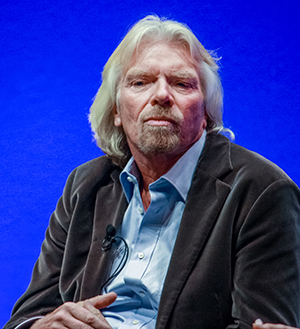GenieBelt’s Anastasios Koutsogiannis outlines the difficulties facing innovation in construction, but offers some hope for the industry.
Technology in the construction sector has become more and more intense during the last years. Nevertheless, we have to admit that things still move slow compared to other sectors, such as transportation, finance and media.
According to consultant McKinsey & Company, the construction industry is one of the least digitised sectors – IT spend doesn’t exceed 1% and only agriculture and hunting seem to be in a worse place.
This troubling reality suggests that the building sector should become much better at taking advantage of the tech opportunities emerging. Otherwise, it is under the serious danger of falling behind in the race for innovation.
Simply put, there is an imminent need for disrupting thinking and a fresh approach which could change the way we train, work and eventually build in construction. Only then will it be possible for the industry to attract a young and tech-savvy workforce.
The good news is that the sector seems to be ready for this vital step. At this point, the biggest challenge lies in being able to identify the opportunities that are already present in the market and implement them in construction.
Richard Branson: ‘Construction is falling behind in the innovation race’
Business magnate and founder of Virgin StartUp, Richard Branson, expressed recently in LinkedIn his view that the construction industry is at the moment falling behind in the innovation race.
To change this, he recently launched, in collaboration with the UK construction company Colmore Tang, a contech initiative called ConstrucTech.

Virgin StartUp and Colmore Tang are inviting ambitious start-ups to take part in a six-week programme which will bring them in contact with construction experts and mentors. Birmingham-based contractor Colmore Tang has put up £10m to launch the ConstrucTech programme with the help of Virgin StartUp, a not-for-profit offshoot of the Richard Branson empire.
This construction innovation accelerator focuses on three crucial challenges:
- People: How we can optimise the performance of workers on site by providing them with the right resources and tools.
- Smart materials: How we can boost productivity and limit environmental impact through the use of smart materials and tools.
- Data: How construction can become better in collecting and analysing its data.
Andy Robinson, CEO of Colmore Tang, agrees with Branson that the building sector should get faster in identifying and adopting new innovative techniques. Only then will it be possible for the industry to overcome data fragmentation and accelerate the cultural adaptation process.
The struggle of attracting young workforce in construction
The attraction of young and highly competent workforce is one of the core issues the construction sector is battling against. To make matters worse, during the next 20 years the building industry will have to reskill more than 600,000 workers to new positions created by digital technologies.
It doesn’t take much, then, to realise that bringing young and tech-flexible people to work for construction can make a big difference. This is where education is expected to play a decisive role. By providing students with the right tools and technologies it can become a powerful actor of change for the building industry.

Dudley College of Technology is an excellent example for the whole sector. In collaboration with construction stakeholders, it has created the Advance II building which could be described as a centre of excellence for construction students.
In short, Advance II introduces students and apprentices to advanced building technologies. Through the use of cutting-edge virtual reality technology, individuals can train with great precision and safety in the use of heavy machinery and construction equipment.
Thanks to the programme, the participants have the opportunity to develop their building, construction design, civil engineering and BIM skills.
Without doubt, it’s a noteworthy effort which can turn things around for the industry and put a brake on the tendency of young professionals to choose other industries instead of construction to pursue a long-term career.
Furthermore, virtual technology can allow cheaper and faster training. Being able to practice the different tasks (eg operating a crane) in a perfectly simulated and completely safe environment can accelerate the training process and save the education institutions money.
But more important, the application of cutting-edge technology to the teaching routine can help the building sector to redefine its profile and catch the attention of young people who are looking for a promising technology-related career.
Construction is ready to embrace innovation
Despite the various challenges that construction encounters when it comes to digitisation, the industry is ready for change. In a nutshell, here are some of the most significant ways in which technologies are transforming the building sector:
Innovative materials
A big change is about to come in construction materials. A lot of emphasis is expected to be put on different types of building materials such as, nanomaterials, upcycled materials and self-healing infrastructure.
The central point of focus is the minimisation of the environmental impact, while using materials which are durable and remarkably cost-efficient. A smart era in the way we build is around the corner.
Improved architecture & design
Artificial intelligence and virtual reality technologies are also anticipated to have a critical contribution to construction’s future.
First things first, AI-supported BIM can provide construction with the opportunity for a more interactive design process where all involved sides can add their input and optimise the suggested virtual blueprint.
Moreover, VR can play a fundamental role in real-estate and by extension in design. Through the help of virtual tours, individuals have now the option to wander around their future house or office, provide their feedback and contribute actively to project design and completion.
Robotics and 3D printing
Robots are already part of the building process and their presence is expected to become stronger and stronger during the upcoming years. Self-driven vehicles, street laying machines and building drones are only a few but very representative examples.
The automation of the building process is on the way and this is expected to lead to critical productivity increases as well as to changes in terms of workforce needs for the industry.
3D printing is another exciting possibility for the construction industry. With the help of 3D (and 4D) printing new impressive structures will be built in a shorter amount of time and with a considerable lower cost. China is one of the countries which has invested a lot in this technology and the results are very encouraging so far.
The thriving eco-system of tech start-ups
Construction is on the verge of a substantial strategic shift. Technology is the main actor of change and it will eventually have a ground-breaking impact on how we collaborate in the building industry.
“We are experiencing the death of the enterprise and the birth of the eco-system. A small independent business that tries to specialise on something is better than a bigger company that tries to do everything themselves. Just imagine companies being the best at what they do and working together to create an enterprise level solution through eco-systems,” highlighted BIM expert, Matthew Jackson, during his recent talk at European ConTech Summit.
It is no exaggeration to claim that the present and future of construction is vastly depended on collaboration. There is an imminent need for strategic partnership in the industry. This can be achieved through the emergence of a collaborative ecosystem and the creation of a clear communication path.
Like that, construction can fight against punitive contracts and mistrust. As GenieBelt CEO, Ulrik Branner, suggests: “The future is about building open-systems, freeing the data, and making it easy to integrate.”
Once again, the power of data is more than evident. Data is the basis on which construction innovation can flourish. But for this to happen, the industry should invest in digital solutions which can allow construction stakeholders to exchange project information and intelligence in real-time.
In other words, the elimination of fragmented communication should be seen as one of the most crucial priorities for the building sector on a global level.
GenieBelt rides the waves of change
We want to become the digital backbone of the construction industry and help the sector deliver building projects of better quality and improved margins. Construction is full of opportunities and ambitious people who want and, more importantly, can make construction a better place.
But a stronger connection with the tech world is required. Only then, we will be able to move toward a more productive and data-driven industry.
“What we need to do is look forward to the future, use digital tools to ease our work practices and manage projects the way clients expect them to be done so without hiding the issues until it’s too late to make the necessary changes to minimise the cost impact. Transparency, accountability and collaboration is the way forward,” underlines Jason Ruddle, UK MD at GenieBelt.
Catching up with the innovation race in construction requires a lot of effort and powerful strategic partnerships which will result from the rise of a well-functioning and fully-integrating data eco-system.
Anastasios Koutsogiannis is content marketing manager at GenieBelt















